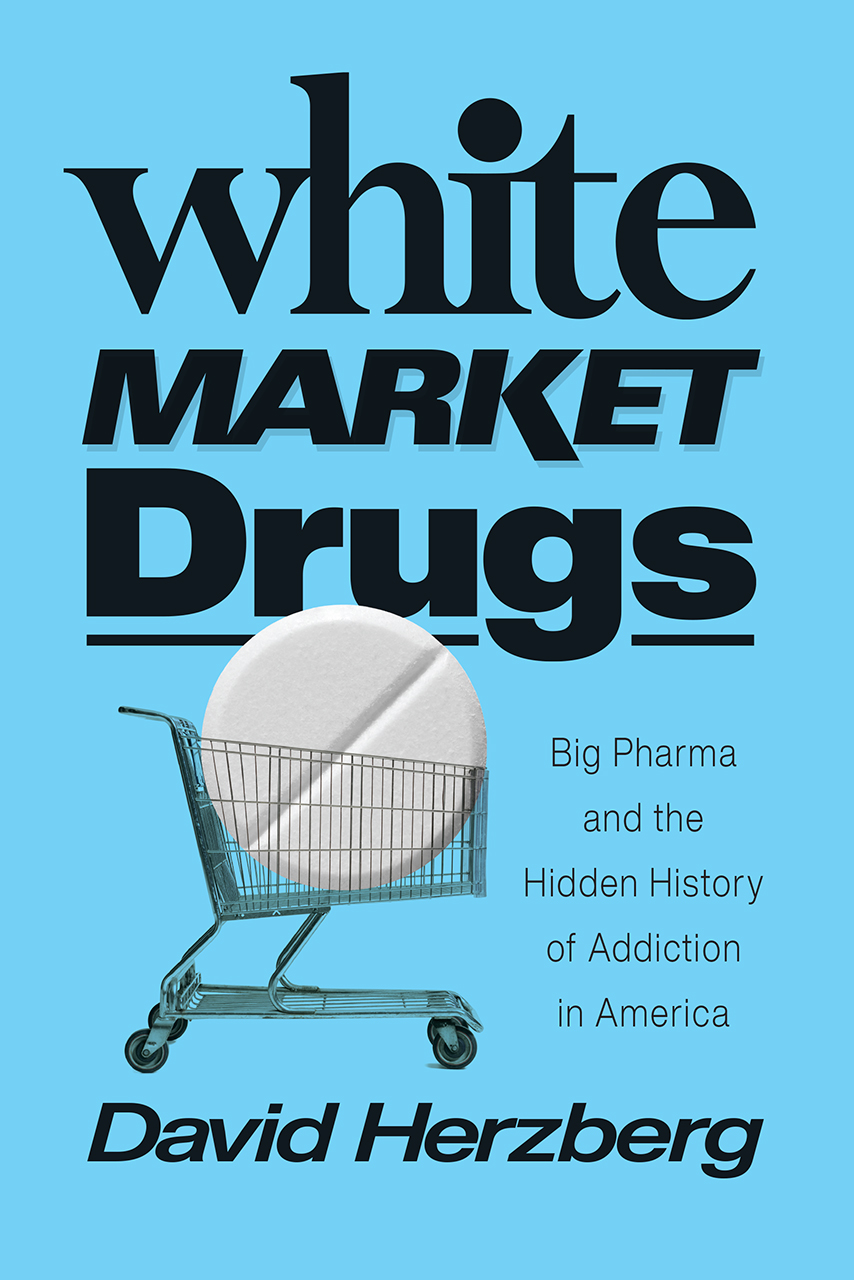- Better Prescribing: Doctors can improve their prescribing practices, for instance, through evidence-based clinical guidelines (e.g. for opioid prescription, for adequate medication-assisted therapy for OUD patients), prescribers training, surveillance of opioid prescriptions, and regulation of marketing and financial relationships with opioid manufacturers. In addition, patients and the general public can also benefit from clear educational materials and awareness interventions to enhance their opioid-related literacy and reduce stigma.
- Better care: Including the expansion of coverage for long-term medication-assisted therapy (e.g. methadone, buprenorphine, naltrexone) coupled with specialised services for infectious diseases management (e.g. HIV, hepatitis) and psychosocial interventions. Some countries have implemented interventions such as the availability of overdose reversal medications for all first responders, needle and syringe programmes, and medically supervised consumption centres.Quality of care must be improved and measured.
- Better approach: There can be better coordination across the health, social and criminal justice systems. Governments can consider setting up of coordinated networks among the three sectors aiming to facilitate access to integrated services for people with OUD. In addition to health services, social interventions around housing and employment support, and law enforcement uptake of a public health approach are central.
- Better knowledge and research: Including the use of big data and impact evaluations to generate new information from different sources along with the application of advanced analytics. In addition, quality of care measurement should be enhanced in areas such as opioid prescription, OUD health care services, and patient reported indicators (e.g. PROMs, PREMs). Research and development is needed in key areas such as new pain management modalities and OUD treatments.
17 de maig 2019
Opioid epidemic and the need for urgent measures
25 d’agost 2018
The US opioid crisis: the public health epidemics that never should have happened
DOPESICK: Dealers, Doctors & the Drug Company that Addicted America
In 2018, an opioid epidemic that began two decades earlier with OxyContin finally seized the nation’s attention. Over 250,000 Americans had died from overdoses involving prescription painkillers. Every day, hospital emergency rooms nationwide treated 1,000 people for abusing or misusing these drugs. Prescriptions written for narcotic painkillers—and overdoses associated with the drugs—had started to slowly decline. But counterfeit versions of fentanyl were rapidly driving up the overall numbers of overdose deaths.The more you know about it, the more you get concerned about how this tragic epidemics could have been avoided. The details explained in a book written 15 years ago, and reedited now, are horrendous.
The connection between pharma sales promotion, lobbying and an inappropriate regulation is a dramatic story that has a known outcome: 65,000 deaths a year from addiction to oxycodone and fentanyl.
The “opioid crisis” is actually two separate crises, each with its own causes and solutions. One involves illegal narcotics, such as counterfeit fentanyl, and requires the attention of law enforcement as well as compassionate treatment for those addicted to these lethal drugs. The other crisis lies in the medical use of opioids, and its solution is much easier. There is no question that opioids, particularly when used at low dosages, work for some patients who can’t otherwise find relief. But if companies value their employees, if governments want to reduce the number of people addicted to opioids, if doctors want the best for their patients, then a new approach to the treatment of pain must become a priority. Many experts believe that most types of pain can be successfully treated with methods popular before the opioid era began, such as physical therapy, exercise, behavior modification, and non-narcotic drugs. Many institutions have begun to adopt these methods, and federal officials recently recommended that doctors limit opioid dosages and switch to another type of treatment, rather than raise the dosage, if patients don’t respond. Some states have taken the more draconian step of limiting the number of opioids a doctor can initially prescribe, to just a few days’ supply.
For two decades, drug companies such as Purdue used pain patients as shields and surrogates to advance their corporate interests. For pain treatment to change, patients will need to fight to put their concerns ahead of these interests, and doctors, employers, hospitals, and other institutions have to become fierce advocates for treatments outside the flood of narcotics that has proved so profitable and expedient for drugmakers and insurers. The lesson of the past two decades is a clear one. Change is not optional. It is essential if we are to alter the cascade of death, addiction, and despair that is now a fundamental part of American life.In another recent book, you'll find the emotional side of the loss, how mothers lost their sons and the impact. Both books illustrate a national emergency that the government has recognised now, after two decades!
PS. Latest article in FT
PS. If you want to know what's going on in our country check this report. Five years growth in publicly funded opioid drugs: 45%!!!. Public health officials and prescribing physicians should read both books before it is too late.
23 de desembre 2020
The profits of opioid addiction epidemic
American Overdose. The Opioid Tragedy in Three Acts
Formerly in this blog you may have read about opioid epidemics. In the US is a great social and public health tragedy. If you want some details about fentanil consumption in Catalonia, check this report (p.153-155).
In the book America overdose, you'll find an exceelent description about what has happened in US in practical terms. Wirtten by a journalist from The guardian, it may help any public health official of any country to understand the huge danger we have to confront. The starting point for McGreal’s deeply reported investigation is the miners promised that opioid painkillers would restore their wrecked bodies, but who became targets of “drug dealers in white coats.” And says (in chapter 21):
It would be a mistake to conclude that responsibility for the opioid epidemic lies only with the greed of the drug companies or that it is shared solely with corrupt doctors and pharmacists who profited from mass prescribing. They were facilitated by politicians, regulators, and a broader medical industry with an agenda or that chose not to see. The opioid makers were helped in that because, for many years, the primary victims were those it was easy to look away from—the “dumbass hillbillies,” as Willis Duncan put it.
Purdue may have targeted some of the poorest parts of Appalachia because that’s where the data said opioids were already being prescribed. But it proved a convenience that these regions were among the most marginalized in the country and the easiest to stigmatize as the drug makers pursued the disreputable tactic of blaming the victims for their addiction.
Like the nineteenth-century opium dealers, the painkiller manufacturers used the power of the huge profits of addiction to keep the faucets of mass prescribing open. The quarter of a billion dollars a year the drug industry spends on lobbying bought the complicity of Congress and organizations such as the American Medical Association through silence and distraction. The din of money drowned out the warnings sounded by Dr. Art Van Zee about the devastation already wrought to his Virginia community in the late 1990s and the research by doctors such as Jane Ballantyne that should have prompted critical questioning of the claims made for opioids. Congress and the FDA were told loudly and clearly that a national disaster was unfolding more than a decade before the CDC’s Tom Frieden called it an epidemic.
Drawing on the tobacco companies’ playbook, opioid manufacturers obscured the evidence of the dangers of their products even when it was staring the industry in the face. Instead, the drug makers and their front organizations sought to discredit those who advocated caution.
11 de maig 2021
The profits of opioid addiction epidemic (2)
Empire of Pain. THE SECRET HISTORY OF THE SACKLER DYNASTY
The winner takes it all. And the winner is: the Sackler family. They are not alone, they needed accomplices. CDC says:
In 2019, an average of 38 people died each day from overdoses involving prescription opioids, totaling more than 14,000 deaths.1 While prescription opioids were involved in over 28% of all opioid overdose deaths in 2019, there was a nearly 7% decrease in prescription opioid-involved death rates from 2018 to 2019.
From 1999–2019, nearly 500,000 people died from an overdose involving any opioid, including prescription and illicit opioids.
This rise in opioid overdose deaths can be outlined in three distinct waves.
The first wave began with increased prescribing of opioids in the 1990s, with overdose deaths involving prescription opioids (natural and semi-synthetic opioids and methadone) increasing since at least 19993.
The second wave began in 2010, with rapid increases in overdose deaths involving heroin4.
The third wave began in 2013, with significant increases in overdose deaths involving synthetic opioids, particularly those involving illicitly manufactured fentanyl5,6,7. The market for illicitly manufactured fentanyl continues to change, and it can be found in combination with heroin, counterfeit pills, and cocaine.
And regarding synthetic opioids, you'll find many details inside this book: "The empire of pain" that explains the largest man-made epidemic nowadays.
My intention was to tell a different kind of story, however, a saga about three generations of a family dynasty and the ways in which it changed the world, a story about ambition, philanthropy, crime and impunity, the corruption of institutions, power, and greed. As such, there are aspects of the public health crisis that this book gives scant attention to, from the science of addiction to the best strategies for treatment and abatement to the struggles of people living with an opioid use disorder. The issue of pain and appropriate pain management is enormously complex, and while this book is highly critical of the mass marketing of opioids for moderate pain, it does not explore at any length the harder question, which is currently a matter of heated debate, about the long-term therapeutic value of opioids for severe chronic pain.
Beyond that, somebody should remember that the regulator was and is on vacation...
Highly recommended.
31 de març 2022
Addiction goods and innovation failure
When Innovation Goes Wrong: Technological Regress and the Opioid Epidemic
The medical use of opioids to treat pain will always involve costs and benefits, and the optimal level of opioid prescription is unlikely to be zero. The mistake that doctors and prescribers made in recent decades was to assume overoptimistically that a time release system would render opioids non-addictive. Thousands of years of experience with the fruits of the poppy should have taught that opioids have never been safe and probably never will be. The larger message of the opioid epidemic is that technological innovation can go badly wrong when consumers, professionals, and regulators underestimate the downsides of new innovations and firms take advantage of this error. Typically, consumers can experiment with a new product and reject the duds, but with addiction, experimentation can have permanent consequences.
A must read, by Cutler et al.
16 de novembre 2017
Why we must not let the tech and drug industry forge the future alone
Selected statements on 7 reasons
What are the economics of these extraordinary valuations? The answer must be monopoly. As of September 30, the book value of Apple’s equity was $134bn, while its market valuation was close to $900bn. The difference has to reflect the expectation of enduring “super-normal” profits. This may not be the product of malign behaviour, but of innovation and economies of scale and scope, including the network externalities that lock in customers. Yet only monopoly could deliver such super-normal profits
How should we think about competition policy for businesses that benefit from such powerful monopoly positions? A question is whether these positions are temporary — as the great Austrian economist, Joseph Schumpeter, with his idea of “creative destruction”, would argue — or lasting. This suggests a host of responses, but one at least seems straightforward. Schumpeter would argue that new entries are a necessary condition for eroding such temporary monopolies. If so, the technology giants should be strongly deterred from buying up their potential competitors. That must be anti-competitive
Yet these enormously profitable businesses are parasitic on the investments in collecting information made by others. At the limit, they will become highly efficient disseminators of non-information. This links to a further point: they can, as we now know, be used by people of ill will for the deliberate dissemination of dangerous falsehoods. These facts raise huge issues.
Finally, the activities in which the technology industry is now engaged — what Andrew McAfee and Erik Brynjolfsson call “machine, platform, crowd” — are going to have a huge impact on our labour markets and, if artificial intelligence continues to advance, on our very place in the world.
On a particular drug company, in Project Syndicate: The Opiate of the BossesWhat are the implications? They are that our futures are too important to be left to the mercies of the technology industry alone. It has done magical things. Yet nobody elected it master of the universe. Policymakers must get an intellectual grip on what is happening. The time to begin such an effort is now
Business ethics are again making headlines. This time, the focus is on the rapidly escalating opioid crisis that is destroying lives across the United States. While there is plenty of blame to go around, the largest share of the guilt belongs squarely on the shoulders of the major drug companies – Big Pharma.
The cynicism with which pharmaceutical firms have encouraged opioid drug use is appalling. Providing far too little analysis and oversight, they distribute opiates widely, alongside misinformation about how addictive the drugs truly are. Then they entice doctors with inducements and giveaways – including trips, toys, fishing hats, and, in one case, a music CD called “Get in the Swing with OxyContin” (one of the most popular opioids) – to prescribe them.
In 2007, several executives of the parent company of Purdue Pharma, which markets OxyContin, pleaded guilty to misleading doctors, regulators, and patients about the risk of addiction associated with the drug. The company was hit with some $600 million in fines and penalties.
16 de juny 2021
11 de gener 2021
02 de febrer 2022
The profits of opioid epidemic (3)
The Hard Sell. Crime and Punishment at an Opioid Startup
An absolute public health crisis, a crime without punishment. The outrageous behavior of an obscure drug company, Insys Therapeutics.
11 de novembre 2022
Pharma, big pharma (17)
Big Pharma. The Money Behind the Pills
Contents:
Chapter 1
Big Pharma’s New Deal: Acquisition and Little Innovation
Blockbuster Drugs Are So Last Century BY ALEX BERENSON
When Academia Puts Profit Ahead of Wonder BY JANET RAE-DUPREE
Grant System Leads Cancer Researchers to Play It Safe BY GINA KOLATA
Are Doctors Too Wary of Drug Companies? BY PAULINE W. CHEN, M.D.
Valeant’s History of Deal-Making BY WILLIAM ALDEN
Roche to Buy InterMune for $8.3 Billion BY ANDREW POLLACK AND MICHAEL J. DE LA MERCED
Why Are So Few Blockbuster Drugs Invented Today? BY DAN HURLEY
$2.6 Billion to Develop a Drug? New Estimate Makes Questionable Assumptions BY AARON E. CARROLL
Stop Subsidizing Big Pharma BY LLEWELLYN HINKES-JONES
Ways to Fund Research on Rare Diseases THE NEW YORK TIMES
AstraZeneca to Acquire Majority Stake in Acerta Pharma BY CHAD BRAY
Explaining Valeant: The Main Theories BY STEVEN DAVIDOFF SOLOMON
Chapter 2
Monopolies and Exclusivity Drive Price Spikes
Runaway Drug Prices BY THE NEW YORK TIMES
Costly Hepatitis C Drugs for Everyone? BY THE NEW YORK TIMES
New Cholesterol Drugs Are Vastly Overpriced, Analysis Says BY ANDREW POLLACK
Inflated Drug Prices THE NEW YORK TIMES
Drug Goes From $13.50 a Tablet to $750, Overnight BY ANDREW POLLACK
Big Price Increase for Tuberculosis Drug Is Rescinded BY ANDREW POLLACK
Valeant Under Investigation for Its Drug Pricing Practices BY ANDREW POLLACK
Senators Condemn Big Price Increases for Drugs BY ANDREW POLLACK
No Justification for High Drug Prices BY THE NEW YORK TIMES
Another Drug Pricing Ripoff BY THE NEW YORK TIMES
The EpiPen, a Case Study in Health System Dysfunction BY AARON E. CARROLL
The Complex Math Behind Spiraling Prescription Drug Prices BY KATIE THOMAS
The Lesson of EpiPens: Why Drug Prices Spike, Again and Again BY ELISABETH ROSENTHAL
Chapter 3
Disease Branding and the Profusion of Diagnoses
Ritalin Wars BY JUDITH WARNER
Disease Branding BY BEN SCHOTT
Still the ‘Age of Anxiety.’ Or Is It? BY DANIEL SMITH
Ruling Is Victory for Drug Companies in Promoting Medicine for Other Uses BY KATIE THOMAS
A.D.H.D. Seen in 11% of U.S. Children as Diagnoses Rise BY ALAN SCHWARZ AND SARAH COHEN
Is It Really A.D.H.D. or Just Immaturity? BY KJ DELL’ANTONIA
Overselling A.D.H.D.: A New Book Exposes Big Pharma’s Role BY STEVE SILBERMAN
A Profusion of Diagnoses. That’s Good and Bad. BY DHRUV KHULLAR, M.D.
Chapter 4
The Money Behind Epidemics: Preventing, Treating and Healing
For Profit, Industry Seeks Cancer Drugs BY ANDREW POLLACK
F.D.A. Advisory Panel Backs Preventive Use of H.I.V. Drug BY DENISE GRADY
Advocating Pill, U.S. Signals Shift to Prevent AIDS BY DONALD G. MCNEIL JR.
Painkillers Resist Abuse, but Experts Still Worry BY ALAN SCHWARZ
The C.E.O. of H.I.V. BY CHRISTOPHER GLAZEK
The Insanity of Taxpayer-Funded Addiction BY THE NEW YORK TIMES
F.D.A. to Expand Medication-Assisted Therapy for Opioid Addicts BY SHEILA KAPLAN
As Opioid Prescriptions Fall, Prescriptions for Drugs to Treat Addiction Rise BY ABBY GOODNOUGH
Chapter 5
The Trump Administration vs. Big Pharma
The Real Reason Medicare Is a Lousy Drug Negotiator: It Can’t Say No BY MARGOT SANGER-KATZ
The Fight Trump Faces Over Drug Prices BY KATIE THOMAS
Trump Vows to Ease Rules for Drug Makers, but Again Zeros In on Prices BY KATIE THOMAS
Drug Lobbyists’ Battle Cry Over Prices: Blame the Others BY ERIC LIPTON AND KATIE THOMAS
Draft Order on Drug Prices Proposes Easing Regulations BY SHEILA KAPLAN AND KATIE THOMAS
Lower Drug Prices: New Proposals Carry Lots of Promises BY KATIE THOMAS AND REED ABELSON
What Big Pharma Fears Most: A Trump Alliance With Democrats to Cut Drug Prices BY ROBERT PEAR
Trump Proposes to Lower Drug Prices by Basing Them on Other Countries’ Costs BY ROBERT PEAR
18 de juny 2020
Opioid crisis
Beyond covid crisis there is still another one in US: the opioid crisis. The most relevant book on the topic is the Case-Deaton one.
We are telling the story in the way that we uncovered it, starting with midlife deaths of all kinds. We then focused on the immediate causes, which turned out to be deaths of despair among whites plus a slowdown and reversal in deaths from heart disease, which, until then, had been a main engine of mortality decline. Unfortunately, deaths of despair are not only afflicting middle-aged whites. While the elderly have been largely exempt, there have also been rapid increases in deaths of despair—particularly from overdoses and suicides—among younger whites. For whites between the ages of forty-five and fifty-four, deaths of despair tripled from 1990 to 2017. In 2017, this midlife age-group
had the highest rate of mortality from deaths of despair. But whites in younger age-groups were also doing badly and their deaths rose even more rapidly, accelerating in the last few years.
Drug overdoses are the single largest category of deaths of despair. They are part of a broader epidemic that includes death from alcoholism and suicide, a reflection of the social failures that we have described in this book. Yet the behavior of the pharmaceutical companies caused more deaths than would otherwise have happened, showering gasoline on smoldering despair. Stopping the drug epidemic will not eliminate the root causes of deaths of despair, but it will save many lives and should be an immediate priority. Addiction is extremely hard to treat, even with the cooperation of the addict. There appears to be wide agreement that medication-assisted treatment can be effective, but it is not available to everyone, often because of cost.
Ps. Medicaments i risc de pneumònia
Els analgèsics opiacis causen depressió respiratòria amb la hipoventilació pulmonar resultant;
alguns d’ells (codeïna, morfina, fentanil i metadona) també tenen efectes immunosupressors.
Incrementen el risc de pneumònia i la mortalitat respiratòria en un 40 a 75%.26,27,28
L’any 2018, uns 50 milions de persones als EUA (15% de la població adulta, 25% entre els més
grans de 65 anys) reberen una mitjana de 3,4 prescripcions d’analgèsics opiacis, i 10 milions de
persones reconeixien consum exagerat d’analgèsics de prescripció mèdica.29 A Europa en els
últims anys el consum d’opiacis suaus y forts ha augmentat, sobretot entre la gent gran.30,31
Fentanil i morfina son els opiacis forts més consumits, i més recentment oxicodona. El
tramadol, que és també inhibidor de la recaptació de serotonina, és l’opiaci suau més consumit.
En dos estudis observacionals de publicació recent, el consum de tramadol, comparat amb el
d’AINE, es va associar a una mortalitat 1,6 a 2,6 vegades més alta,32,33 sobretot en pacients
amb infecció i en pacients amb malaltia respiratòria.
17 de febrer 2021
An opioid epidemic documentary and the worrying situation in France and Catalonia
Mort amb recepta (catalan version)
Annual report on Drugs in Catalonia (p.152)
Oxicodone in Catalonia: from 879.775 DDD in 2014 to 1.003.355 in 2019, a 14% increase. Tramadol: from 11.790.547 DDD in 2014 to 17.038.936 in 2019, a 69% INCREASE in 5 YEARS (p.152)
Daily Dose per Inhabitant (DDH)Tramadol: from 4,27 to 6,16 a 44,2% INCREASE in 5 YEARS
A worrying french situation
The documentary: Etats-Unis, la mort sur ordonnance
Nan Goldin denounces: Who profits form the opioid crisis?
14 de juny 2021
17 de juny 2021
Opioid prescription in Catalonia
Sistema d'Informació sobre Drogodependències de Catalunya
You'll find these information in p.152 of the report:
In Catalonia, Fentanyl consumption has risen 24% in 5 years, in daily dose per inhabitant, while Tapentadol has jumped 300%!!!
Somebody should understand why it is this so and take some action.
18 de novembre 2018
On free genetic sequencing, opioids and the Hockney portrait
FROM GENE EDITING TO A.I., HOW WILL TECHNOLOGY TRANSFORM HUMANITY?
FIVE BIG THINKERS — REGINA BARZILAY, GEORGE CHURCH, JENNIFER EGAN, CATHERINE MOHR AND SIDDHARTHA MUKHERJEE — PUZZLE OVER THE FUTURE OF THE FUTURE.
Mortality risk, insurance, and the value of life
Opioid nation by Marcia Angell
Genetics Start-Up Wants to Sequence People’s Genomes for Free
THESE DNA STARTUPS WANT TO PUT ALL OF YOU ON THE BLOCKCHAIN
Hockney
15 de juny 2021
17 de gener 2022
30 de desembre 2023
La geopolítica dels opioides sintètics
Why America Is Struggling to Stop the Fentanyl Epidemic. The New Geopolitics of Synthetic Opioids
THE ECONOMIC TOLL OF THE OPIOID CRISIS REACHED NEARLY $1.5 TRILLION IN 2020
Hi ha dos tipus d'epidèmies les naturals i les artificials. Aquesta classificació no la trobareu als llibres d'epidemiologia. Les artificials són les que crea l'home amb l'objectiu de destruir la humanitat, i que generalment persegueixen poder i diners.
Hi ha una epidèmia artificial que ha agafat molta volada des de fa més de dues dècades als USA, es tracta de l'epidèmia dels opioides sintètics, del fentanil. Em refereixo a l'ús recreatiu del fentanil, és clar. L'ús mèdic està ben definit i l'efectivitat desmostrada. He escrit repetidament a aquest blog sobre aquesta qüestió.
Llegeixo els articles destacats de l'any a Foreign Affairs i en trobo un que m'interessa especialment i va sobre la geopolítica dels opioides sintètics. Als USA hi ha hagut 73.654 morts el 2022 fruit de sobredosi de fentanil. La suma va creixent any rera any.
L'article explica que tot el fentanil que circula als USA prové de la Xina i Mèxic i es pregunta del perquè del fracàs de la lluita contra la distribució d'aquesta droga i del que caldria fer. Tot el que s'ha fet fins ara no ha assolit el que pretenia i assenyala una estratègia geopolítica a endegar.
El cost que representa aquesta epidèmia als USA ha estat quantificat en 1.500.000.000.000$, és a dir un bilió i mig durant l'any 2020. Aquesta és una xifra descomunal, 6 vegades el PIB de Catalunya. Em fa dubtar del seu càlcul, però és una estimació oficial amb metodologia contrastada.
Aquesta setmana ja sabem que la droga ha arribat al mercat i·lícit a Mallorca. Fa uns mesos es va presentar el documental sobre la petjada del fentanil a Catalunya, on es diu que no s'ha decomissat encara però tot assenyalaria que ja circula. Motius més que suficients com per la preocupació i la necessitat de reacció immediata. El que cal fer segons l'OCDE és això.
06 de juny 2019
Health microsystems as the unit of performance analysis
A deep study has been released on performance of public-private partnerships in healthcare in Valencia compared to Spanish NHS. It is an:
Observational study on secondary data from virtually all hospital care episodes produced in 51integrated providers (i.e., administrative healthcare areas) and 67 hospitals, in 2003 and 2015. Alzira’s2015 performance (and its variation since 2003) was compared with all public-tenured peers in the SNHS,using 26 indicators analysing the differences in age-sex standardized rates of events or risk-adjusted mortality, severity-adjusted hospital expenditure and hospital technical efficiencyAnd the conclusion is:
In this comprehensive comparative study on Alzira’s performance, this PPP has not generally outperformed public-tenured providers, although in some areas of care its developments have been outstanding.I agree on the methodology, I can't asses the results and its conclusions because it requires data replication. What it is crucial is the clinical decision making within the health organization (the microsystem and its episodes of care), forget generalizations on public and private and focus on drivers for efficiency in each setting.
PS. Opioid Epidemic CDC data
09 de febrer 2021
Pharma, Big Pharma
White Market Drugs. BIG PHARMA AND THE HIDDEN HISTORY OF ADDICTION IN AMERICA
A book to understand the contribution to addiction over a century.
By showing how the twenty-first-century opioid crisis is only the most recent in a long history of similar crises of addiction to pharmaceuticals, Herzberg forces us to rethink our most basic ideas about drug policy and addiction itself—ideas that have been failing us catastrophically for over a century.
This is the outline:
IntroductionThe First Crisis
1 Drug wars and white markets
2 “Legitimate addicts” in the first drug war
3 Preventing blockbuster opioids
The Second Crisis
4 Opioids out, barbiturates in
5 A new crisis and a new response
6 White markets, under control
The Third Crisis
7 White market apocalypse
Conclusion: Learning from the past
Appendix: White market sales and overdose rates, 1870–2015
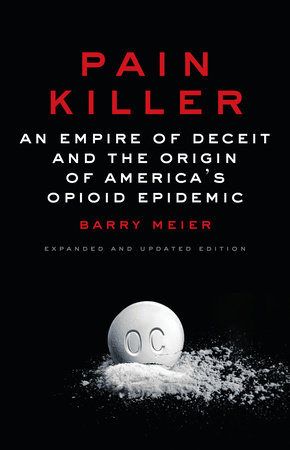

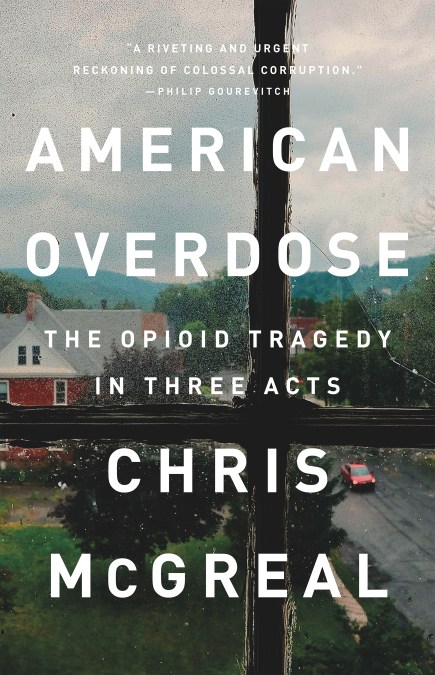



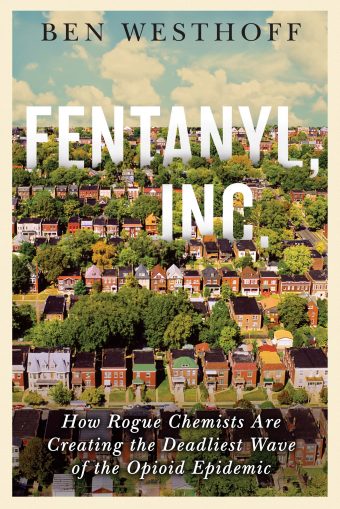
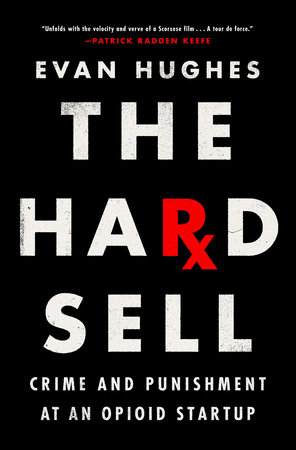

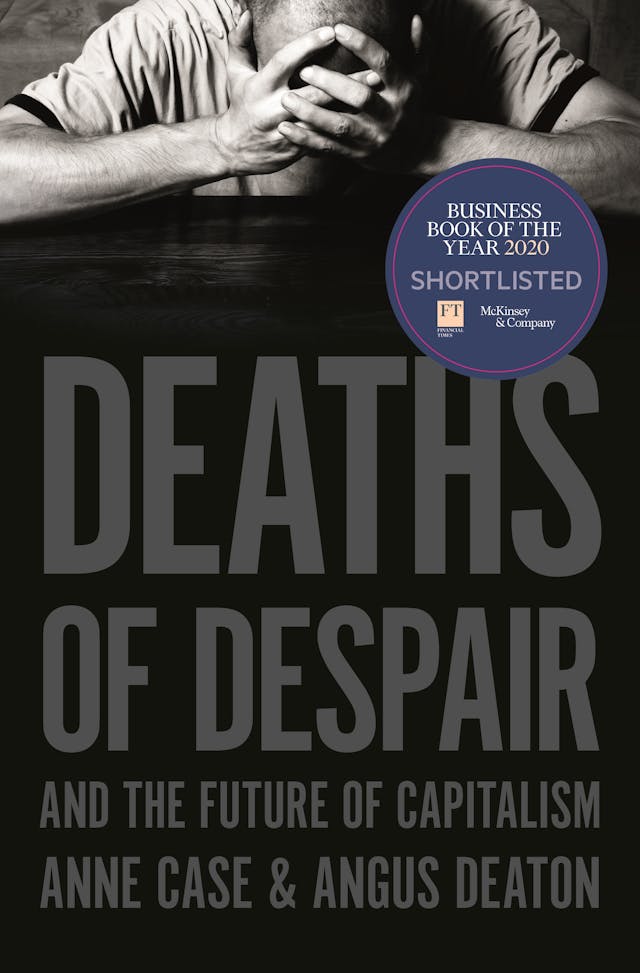


.jpg)



